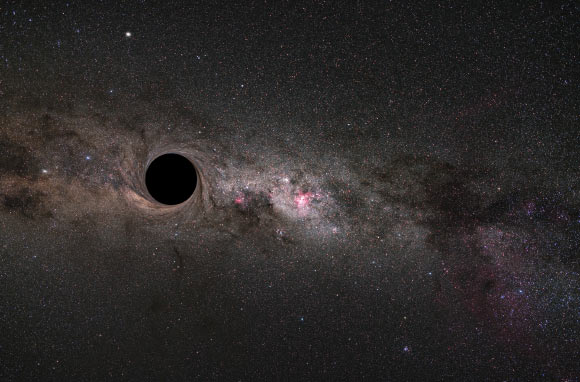Amir Siraj and Professor Avi Loeb from the Department of Astronomy at Harvard University have developed a new method to search for primordial black holes in the outer Solar System, based on accretion flares that result from impacts of small bodies from the Oort Cloud.
Source: Sci News
Anomalous orbits and clustering of detached trans-Neptunian objects in the outer Solar System suggest the possible existence of Planet Nine, a planet with a mass of 5 to 10 times that of Earth, at a distance of 400-800 AU from the Sun.
In 2019, astronomers Jakub Scholtz and James Unwin suggested that this hypothetical planet could potentially be a grapefruit-sized primordial black hole since the likelihood of trapping for a black hole may be comparable to that for a free-floating planet.
“Planet Nine is a compelling explanation for the observed clustering of some objects beyond the orbit of Neptune,” Siraj said.
“If the existence of Planet Nine is confirmed through a direct electromagnetic search, it will be the first detection of a new planet in the Solar System in two centuries, not counting Pluto.”
“A failure to detect light from Planet Nine — or other recent models, such as the suggestion to send probes to measure gravitational influence — would make the black hole model intriguing.”
“The outskirts of the Solar System are our backyard. Finding Planet Nine is like discovering a cousin living in the shed behind your home which you never knew about,” Professor Loeb said.
“It immediately raises questions: why is it there? How did it obtain its properties? Did it shape the Solar System history? Are there more like it?”
In their new paper, Siraj and Professor Loeb found that if Planet Nine is a primordial black hole, its existence can be discovered by the upcoming Vera C. Rubin Observatory Legacy Survey of Space and Time (LSST) due to brief accretion flares powered by small Oort Cloud bodies, which would be detected at a rate of at least a few per year.
“In the vicinity of a black hole, small bodies that approach it will melt as a result of heating from the background accretion of gas from the interstellar medium onto the black hole,” Siraj explained.
“Once they melt, the small bodies are subject to tidal disruption by the black hole, followed by accretion from the tidally disrupted body onto the black hole.”
“Because black holes are intrinsically dark, the radiation that matter emits on its way to the mouth of the black hole is our only way to illuminate this dark environment,” Professor Loeb added.
LSST is expected to have the sensitivity required to detect accretion flares, while current technology isn’t able to do so without guidance.
“LSST has a wide field of view, covering the entire sky again and again, and searching for transient flares,” Professor Loeb said.
“Other telescopes are good at pointing at a known target but we do not know exactly where to look for Planet Nine. We only know the broad region in which it may reside.”
“LSST’s ability to survey the sky twice per week is extremely valuable,” Siraj said.
“In addition, its unprecedented depth will allow for the detection of flares resulting from relatively small impactors, which are more frequent than large ones.”
The team’s paper will be published in the Astrophysical Journal Letters.
Source: Sci News

































Leave a Comment
You must be logged in to post a comment.